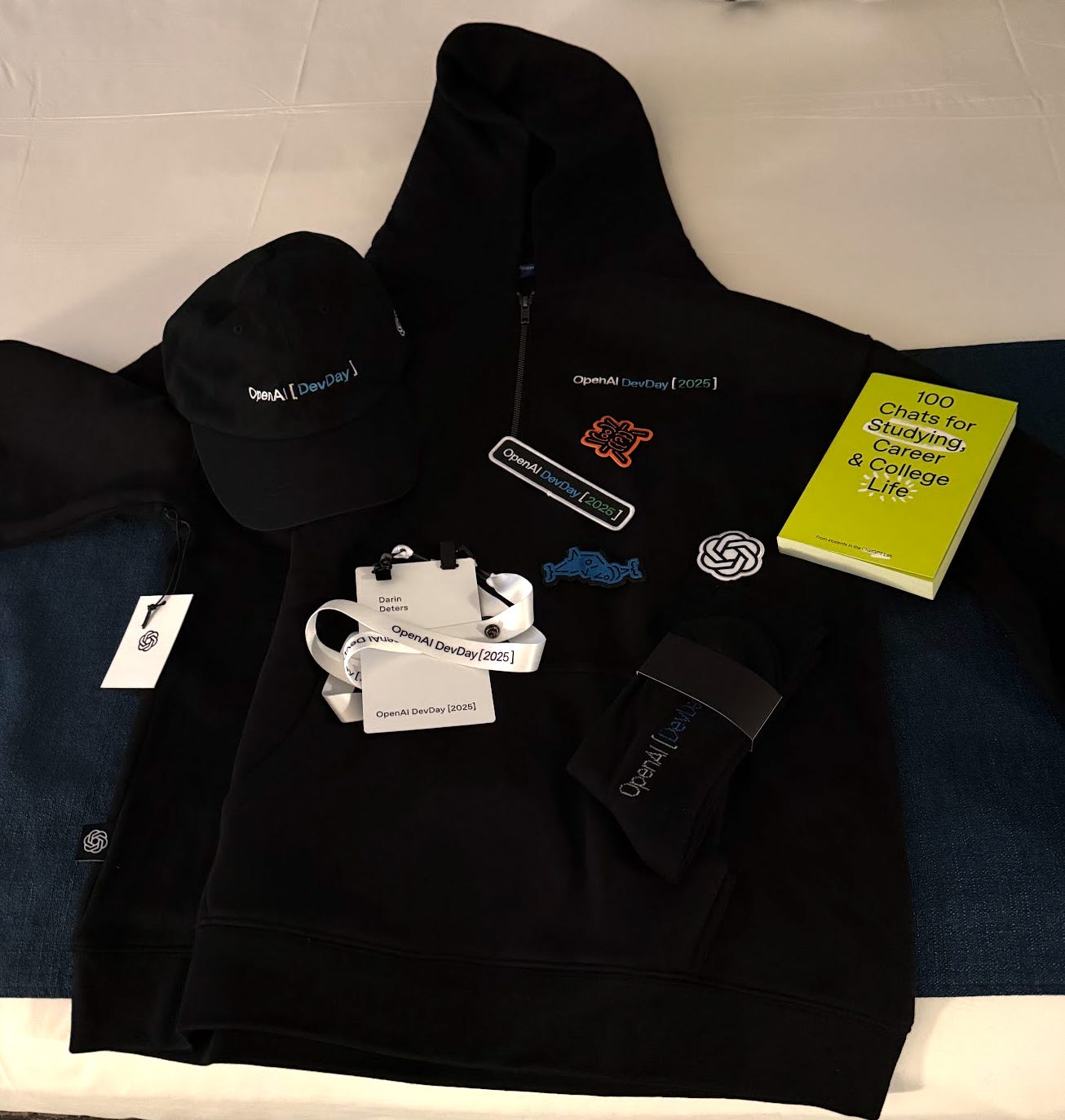OpenAI DevDay 2025: Feels Like AWS re:Invent in the Early Days
This week I attended OpenAI DevDay 2025 in San Francisco — my first time going to the event. And honestly? It reminded me of AWS re:Invent back in the early days.
Not the Vegas-scale spectacle it’s become, but the builder-first, product-driven version — small, focused, and bursting with technical energy. There weren’t walls of vendors or sponsorship fluff. Just OpenAI showing up with serious updates for developers who actually ship things.
It felt like the beginning of something big.
Below is what stood out, what it means, and how I’d start building on it right now.
The Big Announcements
Product / Feature
What It Is
Why It Matters
Apps in ChatGPT + Apps SDK (preview)
Build fully interactive apps inside ChatGPT. The SDK lets you define UIs, connect APIs, and deploy to an app directory.
ChatGPT just became an operating system for AI apps. If your product has an API, you can make it natively interactive inside ChatGPT.
AgentKit
A framework for building, deploying, and monitoring multi-step AI agents.
Think “AWS for agents.” Handles orchestration, versioning, evaluation, and observability — the pieces everyone’s been duct-taping together.
Sora 2 (video via API)
Text-to-video model with editing and animation tools.
Turns OpenAI’s video tech into something product teams can use at scale — for marketing, storytelling, and education.
Codex (GA)
The next-gen code model, now available with Slack and SDK integrations.
Code generation meets workflow automation. Build internal DevOps tools or Slack bots powered by Codex.
GPT-5 Pro
High-reliability model for long-context, complex reasoning.
The “enterprise-grade” version — slower, but accurate and consistent. Perfect for critical workloads.
gpt-realtime-mini
Lightweight, low-cost voice model.
Enables real-time voice chat for agents and apps. Latency down ~70%.
gpt-image-1-mini
Cheaper image generation model.
Makes visuals viable for scale — great for UX aids, thumbnails, or internal dashboards.
Structured Outputs
Schema-enforced JSON responses.
No more brittle parsing. Just clean, reliable outputs that match your schema every time.
The Pattern Is Familiar
The vibe across all sessions was unmistakable: OpenAI is building a platform, not just a product.
Apps SDK → front-end primitives
AgentKit → orchestration layer
GPT-5 + mini models → compute tiers
Structured Outputs → developer reliability
It’s the same arc AWS followed in its first few years:
→ Start with primitives.
→ Make them reliable.
→ Watch the ecosystem explode.
Except this time, the primitives are intelligent.
My Takeaways
Start thinking in “chat-native” UI terms.
Your next product might not need a website — it could live inside ChatGPT.
Agents are the new microservices.
Small, composable, task-specific, with their own observability.
Cost tiers make experimentation practical again.
Mini models open up high-volume, low-cost AI use cases.
Structured Outputs change production reliability.
This one’s underhyped — but it’s huge for stability.
Voice and video are no longer gimmicks.
They’re ready to be part of your user experience design.
Codex
If you haven’t kicked the tires yet, it’s worth your time — you’ll be pleasantly surprised by the pain-points that it addresses.
Why It Felt Like Early re:Invent
Walking the event space, I kept flashing back to re:Invent 2015 — before it became a 60,000-person circus.
It had the same energy: engineers trading architecture ideas, founders sketching prototypes on napkins, product managers asking real technical questions.
No fluff.
No marketing.
Just builders.
That’s what made AWS take off — and that’s what I saw happening again at OpenAI DevDay 2025.
Final Thoughts
OpenAI isn’t just giving us access to smarter models — it’s building the infrastructure layer of intelligence itself.
For builders, this is a window.
Those who start experimenting now — the way early AWS users did — will define the next generation of AI-native products.
Stay tuned. I’ll be publishing deeper dives soon on AgentKit, Apps SDK, and how these can tie into real-world applications and automation.


